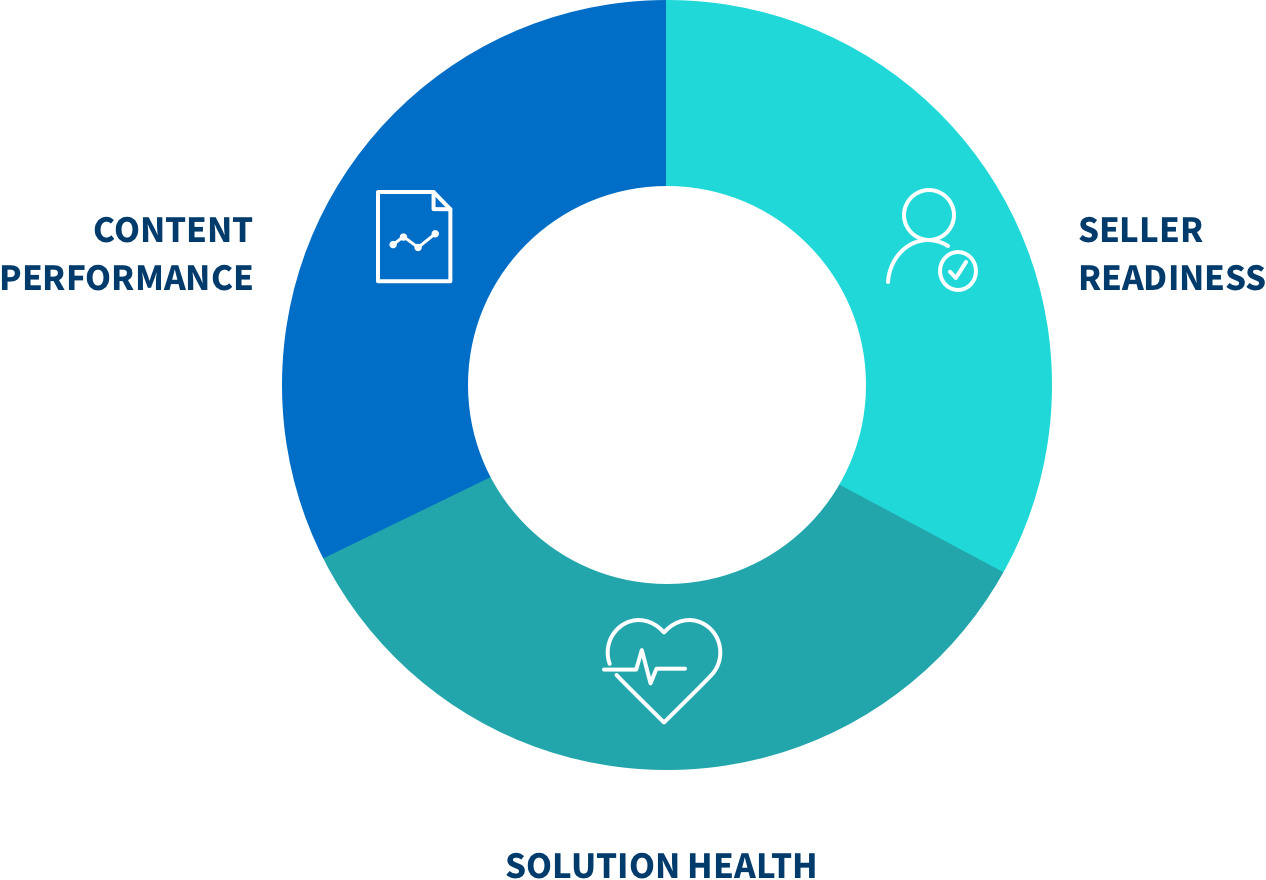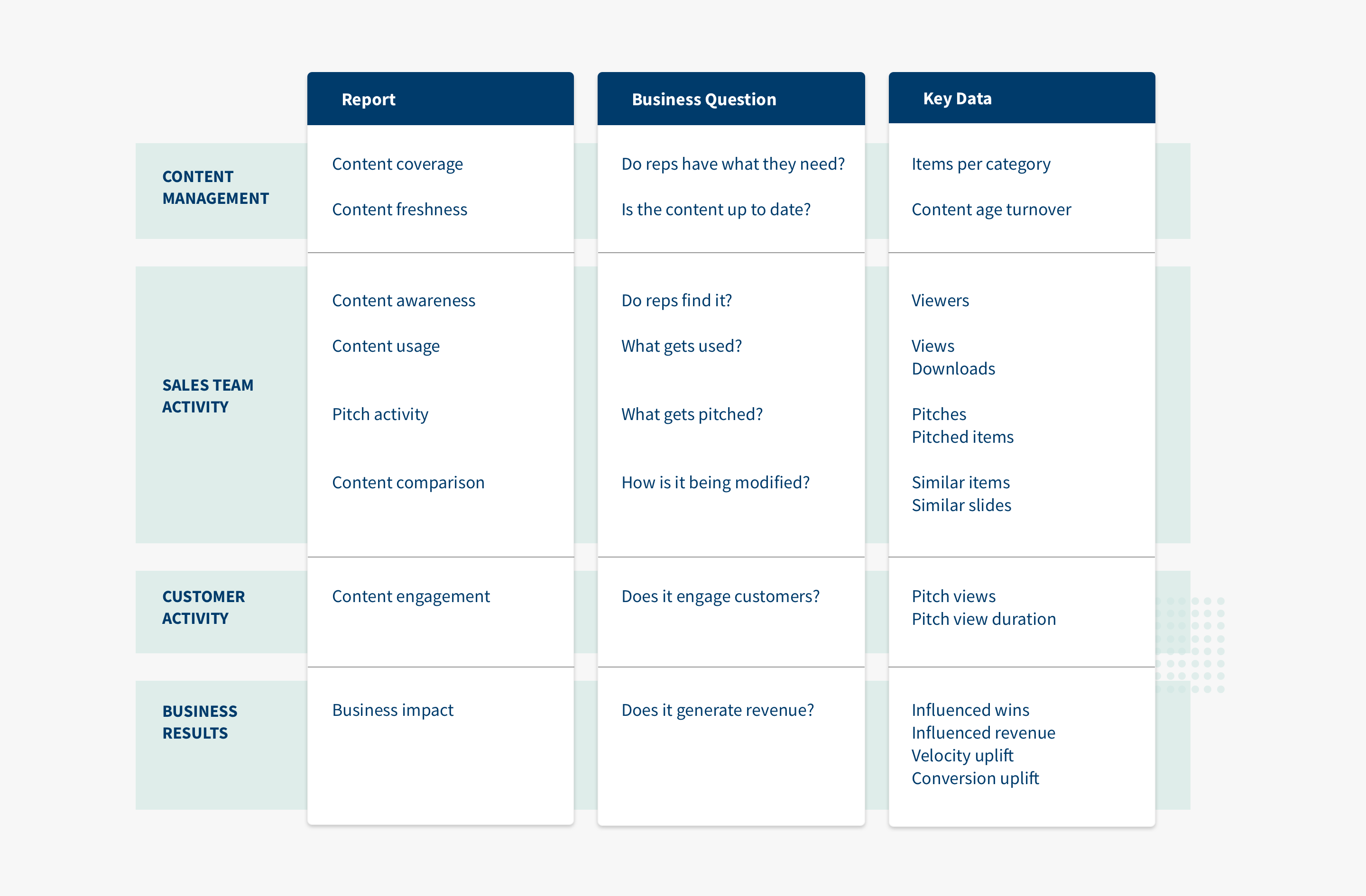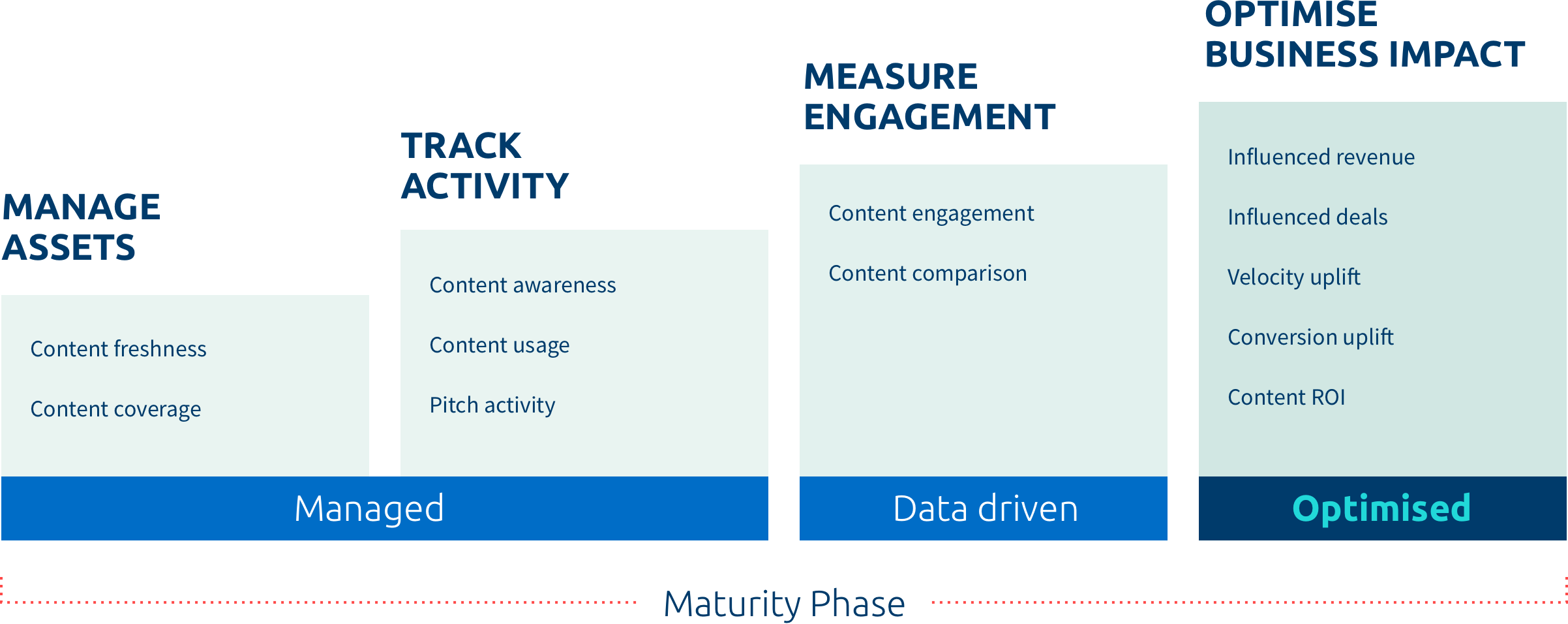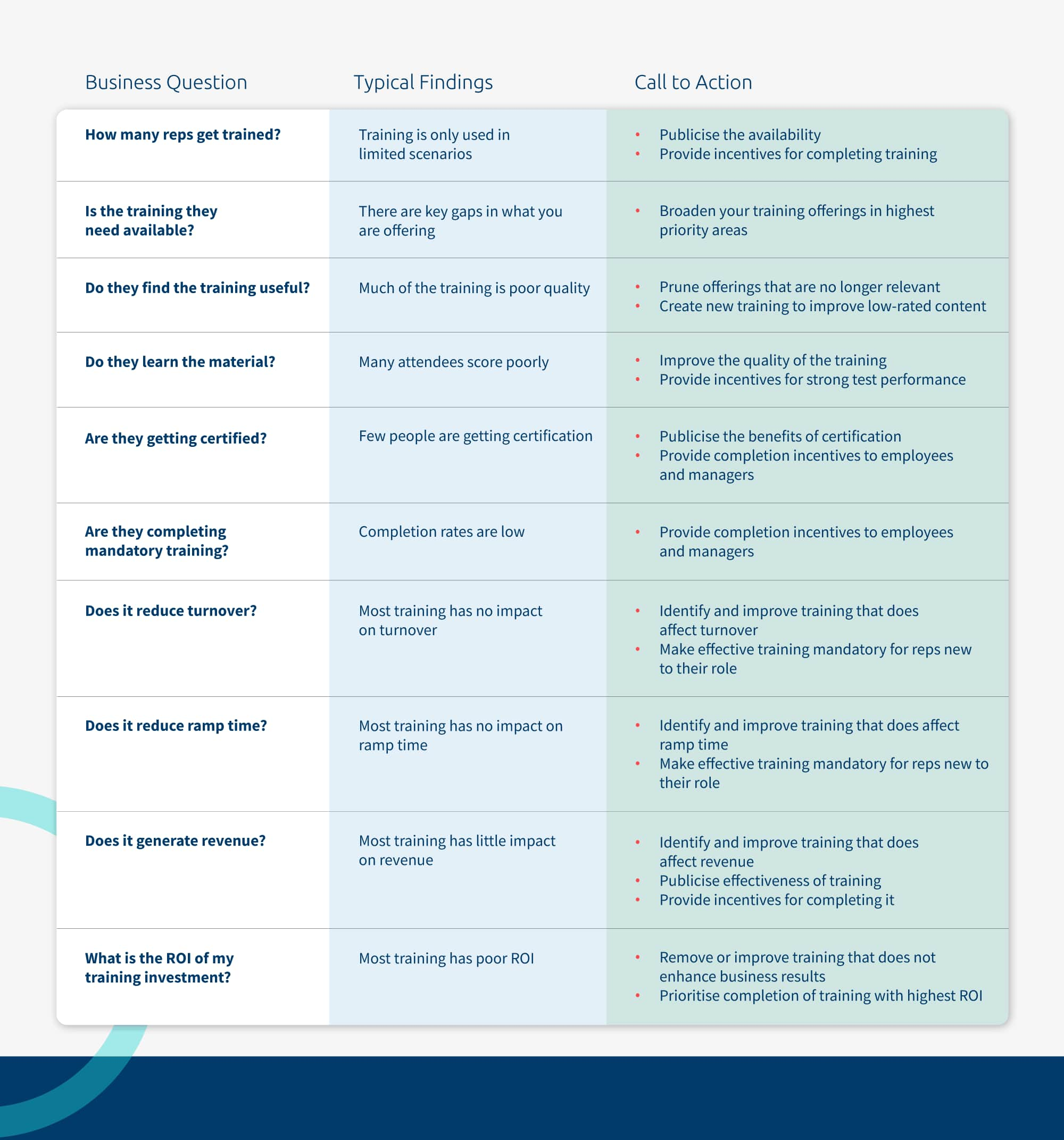Measuring Content Performance
Sales Enablement Content Performance
A modern business is deeply data-driven. Once you have your sales enablement solution in place, you are ready to analyse and optimise your sales process.
With respect to sales enablement, there are three main areas to apply data-driven methods:

Overview
To analyse and optimise content used during the sales cycle, there are eight reports you need to have. Each one answers an important business question. Together, they paint a complete picture of the content that you have, how it is being used, whether it is effective, and how much business value you are getting from it.

Whole Sales Lifecycle
If you can’t analyse across each stage of the sales cycle, you can’t answer crucial questions.
- If you don’t know which deals the content touched, you can’t measure revenue influenced and business impact.
- If you don’t know the sales stage where content is used, you can’t tell whether you have good coverage for each step of the buyer’s journey.
Activity, Local Impact, Business Impact
Ultimately, you want to measure the business impact that your investments are having. “I spent $X building this case study; how much revenue did it generate?” But even so, intermediate metrics yield key insights by measuring the steps along the way.
Activity metrics help you diagnose why you aren’t getting the business impact you want. A particular piece of content might not drive value because nobody could find it, or because reps don’t think it is worthwhile, or because it is pitched to customers who ignore it. How you fix the problem is completely different, depending on what you find! So don’t dismiss activity metrics — they don’t tell the whole story, but they do tell an important part of it.
Measuring local impact is often more precise. Let’s say that during a five-month sales cycle, you send the customer a particular piece of content. How important was it in closing the deal? It depends — there are many factors that affect whether a deal closes and how long it takes. The impact of one piece of content is much higher, however, on the particular sales stage when it is sent. A great pitch deck won’t close a deal by itself, but it can have a clearly measurable effect on moving that deal to the next stage of the sales cycle. And a bad one, especially in the hands of an inexperienced rep, can torpedo the deal quickly. So it’s highly valuable to measure and optimise content within a sales stage as well as across the whole sales cycle.
Content Evolves
During the early stages of the buyer’s lifecycle, marketers connect with audiences directly using content over which they have complete control. But in the later stages, when the sales team enters the picture, that “perfect control” is lost. As content filters through the organisation, it moves from central marketing through field marketers and sellers, finally landing in the hands of customers. Along the way, the content changes and evolves as it is remixed, reordered, and recombined. In many organisations, as much as 80% of the content shown to customers has been modified — it is customised by the field for the needs of each selling situation. The analytics system must be able to track the content, regardless of how it has evolved. By detecting the relationships between pieces of content, the system reveals its true performance and business impact. Otherwise, most of the data can’t be associated with the original content and simply disappears from view.
Optimising Your Business Step-by-Step
After you have put a closed-loop sales enablement solution into place, you can begin to take advantage of its features to enhance your engagement with customers. We have found that companies typically start with the basics, and then over time move to applying data-driven techniques to their entire sales process in order to analyse and optimise it.
Here is a typical path that companies follow in applying the analytics capabilities of the system.

The first step is to move to the Managed maturity phase, using the first two sets of reports. Manage Assets can be done immediately, even before any sellers have begun using the system. In the process of putting the sales content into the system, companies are able to see where they stand. Content Freshness shows which content is old and should be pruned or updated. Content Coverage reveals areas where content is missing or very limited.
As the sellers begin to use the solution and data is available for analysis, the next step is to Track Activity. These reports will show which content is actually being used by the sales team internally and what is being pitched to customers. Even after the sellers have been using the system for a relatively short time, the reports will begin to show interesting patterns. The results are often quite surprising—in most companies, a very small percentage of the content is used heavily and most of it is simply ignored.
Now the company has its content properly organised and has begun filling in its most serious content gaps, and the people who are creating content actually know what’s being used. So, it is time to move to the next maturity phase and begin turning the company into a data-driven organisation. The Content Engagement report will show how content actually performs when it is put in front of customers. That data drives recommendations to sellers on what content will help them get deals closed, and it is used by the marketing team to prioritise their content investments. Content Comparison will show how the sellers are modifying and repackaging the original content, revealing best practices and areas that need attention.
The last phase is to move to the Optimised maturity phase. The key reports here are all focused on Business Impact. Based on measuring the impact of content on business results, marketers can determine the ROI of their content investments and move to a model where that guides their investments.
The Purpose of Analysis is to Drive Action
Graphs and tables are a means to the end — the goal is to improve engagement with the customer as a way to drive increased revenue and shorten the deal cycle. Each of the eight key reports answers an important business question, identifying key issues and opportunities so that you know how to act.

Engagement is the lifeblood of the sales conversation—an indifferent customer is a deal waiting to fail. And in our hyper-informed age, you can’t deeply engage your customer without content. Use these reports to analyse and optimise your engagement with customers throughout their buyer’s journey.
For a deeper exploration of Sales Enablement Content Performance, please refer to the Definitive Guide to Sales Content Performance.